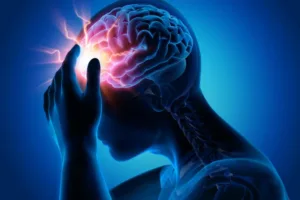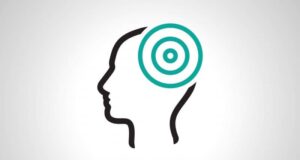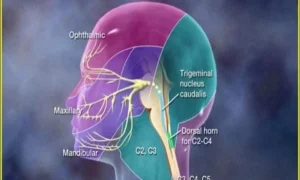Most of us are familiar with the sensation of a throbbing, painful headache. After all, according to the World Health Organization, nearly half of the adult population around the world have had at least one headache within the last year. However, before you write off these painful symptoms as just another headache, it is crucial to learn the differences between headaches and migraines. Although they have some overlapping symptoms, migraines have significant distinctive symptoms and triggers.
Learning the essential differences between migraines and headaches can help you receive the correct diagnosis and bring you long-awaited relief.
What is a migraine?
Migraine is a complex headache disorder that involves recurrent episodes of moderate to severe headaches. Typically, the main symptom of a migraine headache is an intense headache localized to one side of the head (although some people have pain on both sides of the head). The head pain experienced during migraines is usually intense and involves a throbbing sensation.
Importantly, migraine headaches often have other symptoms in addition to head pain, which includes the following:
- Nausea and vomiting
- Dizziness and food intolerance
- Extreme Sensitivity to light and sound
- Irritability

Also, many people who suffer from migraines report experiencing “migraine aura,” which has the following characteristics:
- Sensitivity to light and/or sound
- Seeing “floaters” or bright spots
- Vision blurring or temporary vision loss
Often, some migraine symptoms can even occur one or two days before the head pain, called the “prodromal phase.” Its symptoms include the following:
- Constipation
- Unusual cravings
- Neck stiffness
- Depression
What are the causes of migraine?
According to medical research, migraines are caused by both environmental and genetic factors. If you have a first-degree relative with a history of migraines, you have a higher likelihood of developing them as well. In addition, there are specific factors that can also trigger migraines in susceptible individuals, which include stress, lack of sleep, hunger, fatigue and dietary triggers such as alcohol and certain foods, including aged cheese.
What are headaches?
A headache is a type of pain felt inside your head that can also include the sensations of aching, throbbing and pressure. Moreover, headache pain is often felt on both sides of the pain, with symptoms ranging from mild to severe.
There are many types of headache, with the most common, including the following:
Tension-type headache:
This type of headache involves symptoms of radiating pain from the lower back of the head, including the neck, eyes and other groups of muscles, and typically affects both sides of the head. A tension headache often feels like constant pressure or tightness felt on both sides of the head. This type of headache is caused by several different factors, including stress, musculoskeletal problems, poor posture, lack of sleep, and eyestrain.
Sinus headache
A sinus headache usually feels like a deep and constant pain in the cheekbones, forehead and the bridge of the nose. The sinuses are air-filled spaces behind the bridge of the nose and inside the cheekbones and forehead.
Sometimes, sinuses can become inflamed and blocked due to an allergic reaction or an infection, causing the feelings of pain and tension, ultimately resulting in a sinus headache. Sinus headaches often cause swelling of the face, the sense of pressure inside the ears, and fever.
Cluster headache
Cluster headaches are one of the most painful types of headache, which occur due to a neurological disorder. This type of head pain is severe in intensity and is often felt on one side of the head, as well as around the eye.
Cluster headaches are usually experienced in cycles lasting from 15 minutes to up to several hours that can recur every day or sometimes, even several times a day. Furthermore, cluster headaches typically come with symptoms of nasal congestion, eye-watering, and swelling around the eye.
Medication-overuse headache
Medication-overuse headaches are a type of headache caused by overuse of certain medications such as painkillers. This type of headache is often experienced by individuals already suffering from a headache disorder, such as migraines or tension-type headaches. However, in contrast to other common headache types, medication-overuse headaches are caused by excessive use of medications such as triptans, analgesics, opioids, and ergotamines.
This type of headache is also called “rebound headache.” When overused, headache medication triggers the transformation of headache episodes into a chronic, daily headache.
What are the key differences between headaches and migraines?
The pain of migraine headaches is often felt as an intense, pulsing and throbbing pain. In contrast, most other types of headaches are perceived as dull pain. Migraine headaches are often localized to one side of the head, whereas different types of headache can be felt on both sides. Further, migraine headaches typically involve other symptoms, including nausea, dizziness and Sensitivity to lights and sounds, in contrast to headache.
Conclusion
At the HMC Centre, we understand how painful and debilitating migraines and other types of headache disorders can be. Distinguishing migraines from other headaches can be tricky. However, migraines and other headaches are triggered by different factors and have distinctive symptoms.
If you experience recurring and painful headaches that interfere with your daily activities, such as work and sleep, it is crucial to get evaluated by a healthcare professional. Identifying and treating headaches is essential to prevent their recurrence and help you get back to your daily life.


















